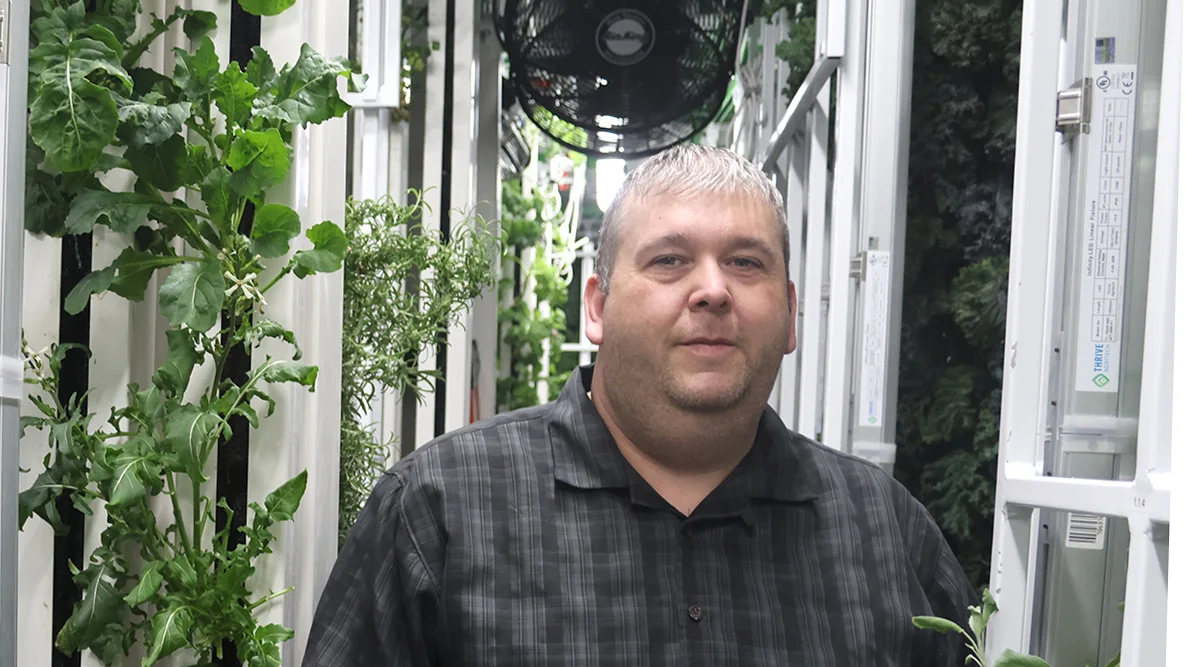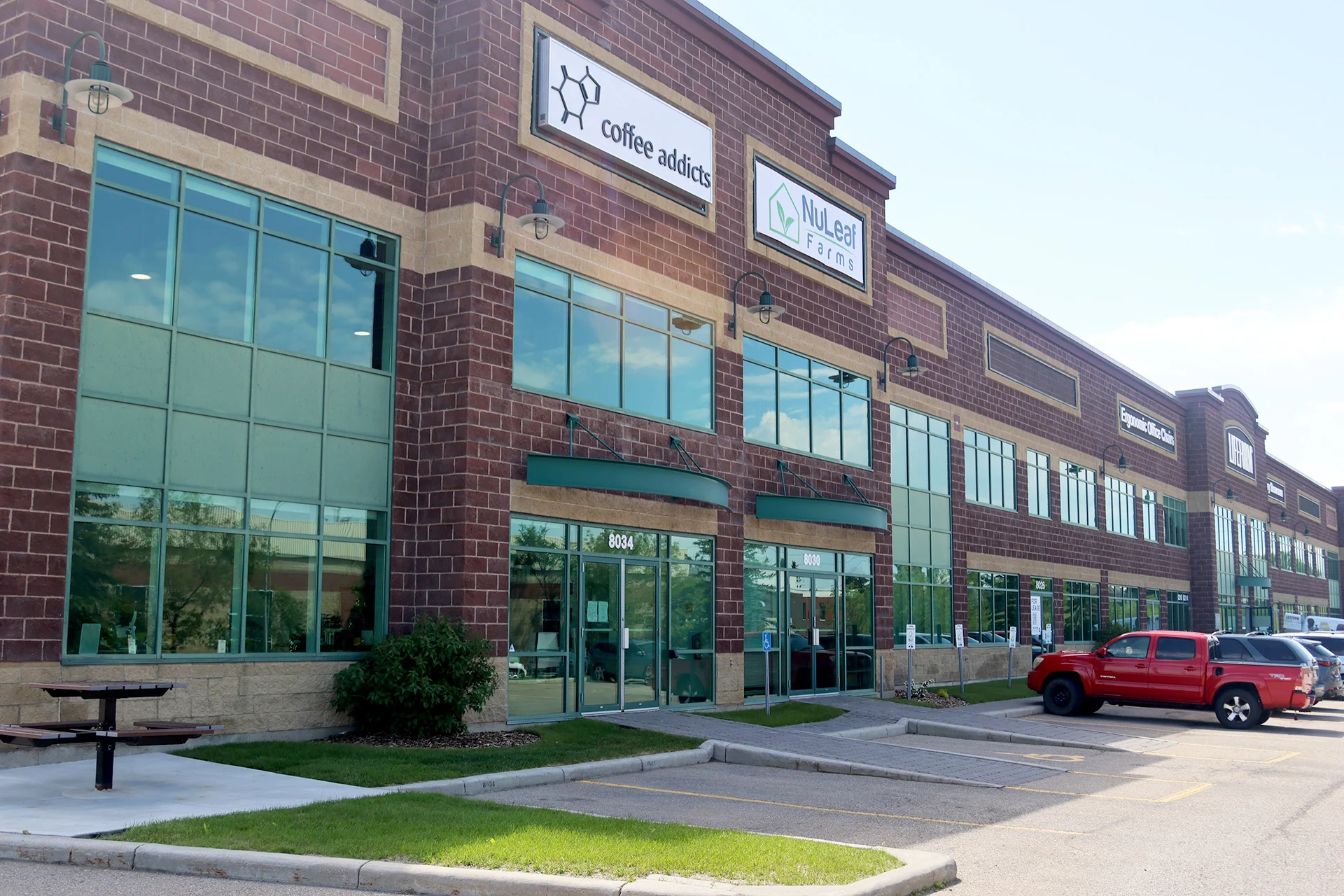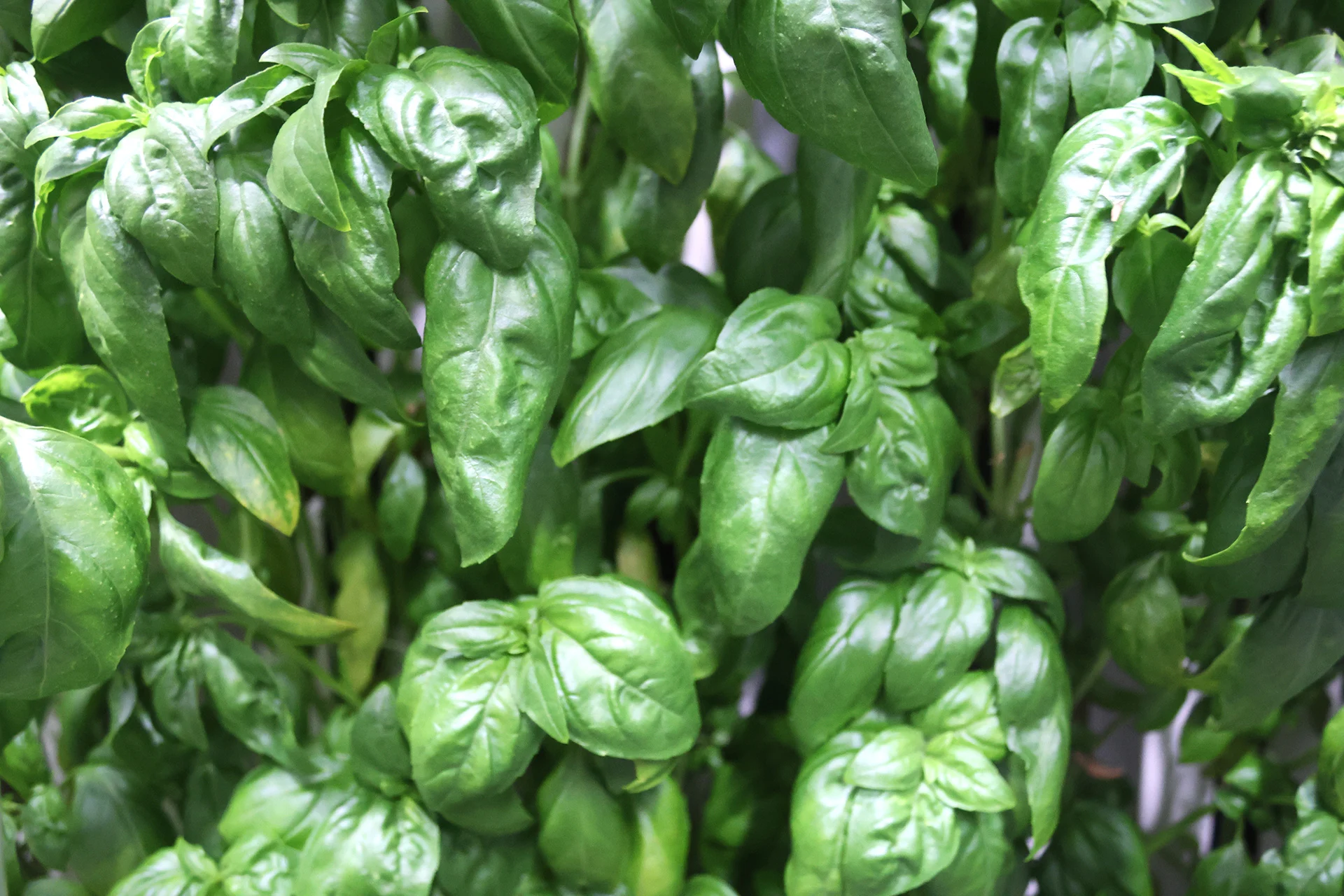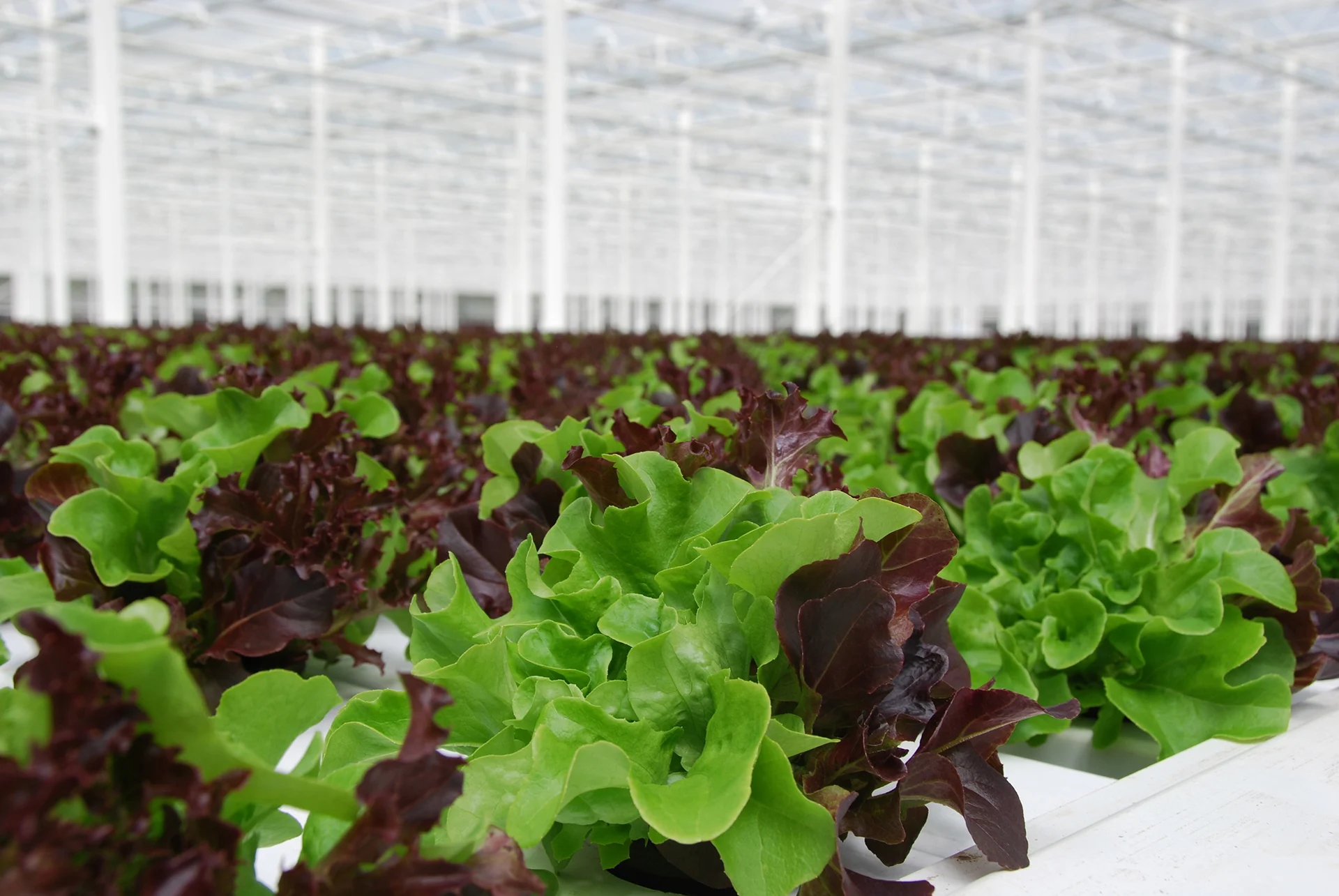
How vertical indoor farming can reduce water use by up to 98%
The booming industry affords Canadians price matching for fresh, nutrient-rich produce.
Drought.
The word causes most farmers anxiety, and it’s expected to hit areas like California hard — especially since those regions already face mounting water scarcity concerns.
And that spells trouble when it comes to food security, since Canadians often get their leafy greens trucked across the border from those warmer climates that boast ideal growing conditions.
But there’s a movement underway in the great white north to bring locally grown and pesticide-free crops to supermarkets and restaurants all year round that uses a fraction of the water, stays fresh longer, and is at less risk of E. coli all the while matching the prices of more traditional agriculture.
It’s called vertical indoor farming, and essentially takes greenhouses to a whole new level.
It seems everyday more vertical facilities are launching, and in areas where you’d least expect them.
Take NuLeaf Farms, for example. The Calgary-based company set up shop in an old engineering office just weeks before the pandemic struck in 2020 — part of a small row of brick businesses near a busy casino in the Alberta city known for oil and gas production.
“Myself and two partners, we came out of the energy industry,” said president Ryan Wright.
“Agriculture stood out like a sore thumb as something that can use a lot of help. We liked the idea of moving the farms into the cities.”

NuLeaf's 10,000-square-foot warehouse houses a 700-square-foot grow room inside that nurtures thousands of plants. The company has another 3,700 square feet in external grow areas, which allows it to sell seedlings for local nurseries that used to be trucked thousands of miles from California. (Rachel Maclean)
And not just the cities, but areas not used to a fresh supply like the frozen tundra of northern Canada or lands belonging to Indigenous peoples.
But there were challenges. The industry was relatively new, and they discovered it could really use a technology boost.
“It stood up pretty early on that we needed to really focus on using the automation and some of the operational practices used in more efficient industries, (like) energy and auto, and implement those into what was going on in the indoor farm space.”
Wright says they turned into the age-old story of “three crazy entrepreneurs” in a garage designing different prototypes.
“So we really broke that down into five silos: water savings, land savings, greenhouse gases, food waste, and pesticides and kind of chemical usage as a catch all,” said Wright.
“The technology has been working great in the sense of, you know, we're producing a little … more than an acre worth of farmland inside of 700 square feet, saving about three million litres worth of water. We've knocked our transportation down about 99 per cent versus traditional ag, food waste about 90 per cent versus the traditional supply chain, and completely eliminated the use of pesticides and chemical sprays.”
Another massive saving is water.
Roughly 70 per cent of freshwater is said to be pulled for agriculture in most regions of the world, according to a 2017 report.
At NuLeaf, where the plants grow in rows up the walls fed by a dripping hydroponics system, that all changes. Wright says they're using roughly 95-98 per cent less water than traditional agriculture.

NuLeaf not only sells herbs, but has been experimenting with a variety of produce like spicy lettuce. They're even looking at how they can incorporate oils from some of their herbs, such as rosemary, for commercial products like shampoo. (Rachel Maclean)
“That water savings equates to about 90 per cent of all the water we use in our facility,” said Wright. “There's probably close to 15,000 to 18,000 plants in the facility. And we're growing it for less than a gallon of water an hour.”
Wright claims the average Canadian uses roughly 70 gallons a day when you calculate in activities like showering, doing the dishes, and flushing the toilet.
“So we're growing an entire farm on less than half, maybe a third, of the amount of water as a single Canadian would use in a day as well.”
- Watch the video above to see exactly how that happens
Vertical farms can also help relieve supply chain issues, which still linger as the world hobbles back from COVID-19, and save on sky-rocketing transport costs.
The biggest challenge is the startup, says Wright. Not only when it comes to increased costs, but also approvals.
“About six or seven years ago urban farmers started to get more interested in growing food indoors in the city,” said Kristi Peters, a food systems planner and sustainability consultant with the City of Calgary.
“And so as part of the portfolio of food work that I do, I looked at our land use bylaw, and discovered that we really didn't have a mechanism or like any sort of right regulation around enabling indoor food growing.”
So she met with stakeholders, commercial growers, regional farmers, and restaurants to get feedback before taking some land use bylaw amendments to council in 2017 for approval.
Now vertical indoor farms are permitted in all of the industrial areas of the city, and some commercial areas as well.
They are popping up all the time, says Wright. Currently 12 facilities have gone through the development permit and business licensing process.
“I just flew back from Los Angeles on Sunday. And, you know, California is a huge state. It took an hour to fly over California,” she said. “But there's no water. Like there's just no water. We don't have that problem yet. But you know, we will have that problem. It may be in 50 years, I don't know, but we will have that problem at some point. But it just does not make sense for us to be purchasing leafy greens and produce grown in a state that has extremely low levels of water supply.”
California's historic multi-year drought even brought on a recent Sriracha hot sauce shortage.
Alberta farmers are no strangers to drought either. The latest National Agroclimate Risk Report shows deep red in the southern areas of the province where many crops are grown.
But indoor farms are also coming to the prairie landscape.
“Inspired Greens comes to mind. They're out of Coaldale and you see their lettuces in all the big box grocery stores,” said Wright. “But I do see … lots of experimenting going on. The growers are all really trying to diversify what they grow.”
And they're really focused on the flavor of the greens and the nutrient density of the greens, she says, adding the probability of a food scare or a contamination issue is lower in that ultra controlled environment.
“[Consumers] don't want to eat that spinach that has 70 per cent less nutrients than it did 30 years ago because the soil is depleted. Even if it's organic, you know, people are quite interested in making sure that the food that they eat is of the highest quality,” said Peters.
When Wendy’s announced they were going to use Whole Leafs they emphasized how it was grown with zero pesticides.
“The move to greenhouse-grown lettuce is part of our ongoing commitment to offer Canadians the highest quality, best-tasting ingredients,” said Lisa Deletroz, the senior director of marketing for Wendy's Canada in a 2020 press release.

Wendy's uses greenhouse-grown lettuce from Alberta in all 384 of its restaurants across the country. (CNW Group/ Wendy's Restaurants of Canada)
“We know that greenhouse farms grow produce that hits the mark for freshness and delicious flavour every time. What's more, this transition will enable Wendy's to further support Canadian producers and the Canadian economy, while offering supply predictability and consistency."
That consistency is key, as farming can sometimes be a big gamble for some producers. Alberta pays out millions in insurance when crops fail for droughts, floods, or even severe prairie storms becoming more common with climate change.
But Alberta’s government also introduced a $10-million Investment and Growth Fund (IGF) to help attract investors and companies to expand their business into Alberta, rather than other competing jurisdictions. The fund was able to entice McCain-backed Goodleaf Farms to start construction on what they call the country’s largest commercial vertical farm in a 74,000-square-foot facility in Calgary after a $2.73-million incentive. The company said it would create 50 jobs during construction and 70 permanent jobs upon startup.
But over at NuLeaf, that’s a tough pill to swallow. Wright says those kinds of funding initiatives lead to staff shortage and competition with local growers — especially because “modern farmers” are required to be more tech savvy.
“Often these are big multinational companies that don't really need the cash in the first place,” he said.
“So we have a brain drain that essentially happens from young companies and ecosystems into these larger companies, only making it harder for actual Canadian innovation to take hold.”
Other innovation challenges are still being sorted out.
A different indoor facility in Calgary called Deepwater Farms incorporated fish into their production — essentially getting free fertilizer in a symbiotic relationship — but found it easier to focus on greens to get the right approvals to sell their produce in grocery stores.

Deepwater Farms also incorporates a version of vertical farming for its produce sold locally in stores across Calgary. (Rachel Maclean)
But the industry is expected to keep growing in size, with one recent analysis claiming it will reach US$25.1 billion by 2030.
“Indoor farming takes away motivation to over-use existing land for agriculture or to convert a very limited supply of arable land to agriculture,” said industry expert Eric W. Stein, who authored a 200-page report on the effects indoor farming has on air, water, and soil.
He says it could one day allow more lands to transform back to forests or be populated with perennials that pull carbon dioxide from the air — a major win to combat climate change in the future.
Thumbnail Image: NuLeaf Farms president Ryan Wright stands inside the 700-square-foot growing container inside the warehouse they use for vertical indoor farming. (Rachel Maclean)







